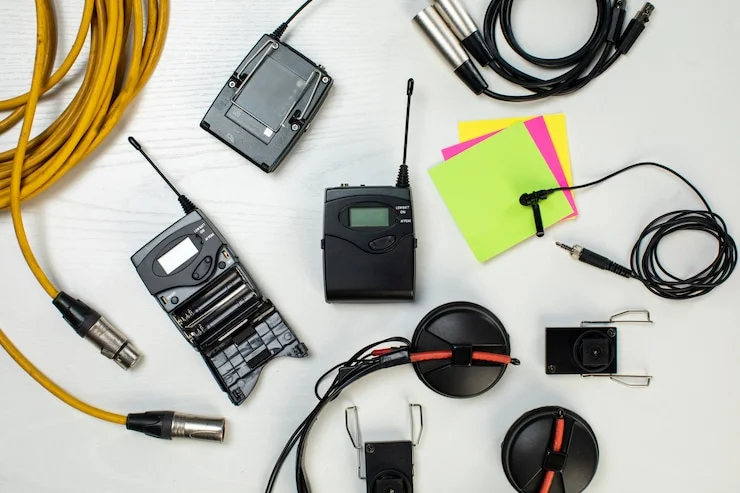There’s something about a broken-in radio strap. The softened leather, the subtle creases, the way it molds to your shoulder like a second skin. For first responders, firefighters, EMTs, and others in the field, a custom radio strap isn’t just gear—it’s part of the uniform, the grind, and the story.
But if you treat it like a throwaway, it won’t return the favor.
So let’s talk care and maintenance. Not the boring “wipe it down” stuff—but real, field-tested ways to make your strap last longer, wear better, and look like it belongs to a pro.
Whether you’re rocking a rugged leather strap or something with custom stitching and department branding, here’s how to keep it sharp—and functional—for the long haul.
Your Strap’s Not Invincible (Even if You Are)
Let’s get this out of the way: your strap takes more abuse than you think.
Sweat. Heat. Gear friction. Water. Smoke. Sunlight. The occasional concrete tumble. It’s a frontline piece of equipment, riding shotgun every shift. And over time, even the best-quality leather or nylon will degrade without proper care.
So if you want that custom radio strap to age like a vintage turnout coat—and not like a soggy gym shoe—maintenance matters.
1. Sweat Happens. Don’t Let It Set In.
After a long shift, your strap has soaked up more than just your effort. Sweat can dry out leather, stain nylon, and slowly break down stitching over time.
What to do:
After each shift, hang your strap in a dry, ventilated area—don’t toss it in your locker or car trunk. If it’s leather, wipe it down gently with a soft, dry cloth. For heavier grime, use a slightly damp cloth (not soaked) with a mild soap or saddle cleaner.
Avoid harsh cleaners, bleach wipes, or soaking. You’re not disinfecting a countertop—you’re preserving a tool.
2. Condition Like It’s a Baseball Glove
If your strap is leather (especially full grain), it needs regular conditioning to prevent cracking and brittleness. Think of it like moisturizing for your gear—it helps retain flexibility and luster.
How often? Every 1–3 months depending on wear.
What to use? A leather conditioner or balm without petroleum (that stuff breaks leather down). Rub it in evenly, let it soak, then buff gently with a dry cloth.
Bonus: conditioned leather smells amazing.
3. Don’t Ignore the Hardware
The strap is only as strong as its clips and buckles. Whether it’s stainless steel, brass, or powder-coated metal, inspect for rust, stiffness, or bent pieces. That hardware is the last line between your radio and the concrete.
Pro tip: Hit the moving parts with a dab of silicone lubricant now and then—not WD-40 (that attracts grime). And always check for loose rivets or stitching around stress points.
4. Clean Nylon Differently
If you’ve got a nylon strap, it doesn’t need conditioner—but it does need cleaning.
Use a soft brush or cloth with mild soap and warm water. Rinse, air dry, and keep it away from high heat (no dryers or radiators). Nylon is tough, but heat weakens the fibers over time.
5. Respect the Custom Work
If your strap has department logos, name embossing, or color accents—don’t ruin them with aggressive scrubbing or harsh cleaners.
Use gentle pressure. Avoid alcohol-based sprays. And if you’ve got reflective or glow-in-the-dark elements, keep them out of direct sun when stored—they’ll last longer.
6. Store Smart
When off-duty, hang your strap vertically in a cool, dry space. Avoid crumpling it into your turnout bag, especially if it’s wet.
Storage tip: leather needs to breathe. Don’t seal it in a plastic bag or airtight container unless you’re prepping for the apocalypse.
Why It All Matters: Comfort, Safety, Legacy
A well-maintained strap doesn’t just look good—it rides better. It molds to your body. It holds your radio exactly where you want it. And in high-stress moments, that consistency matters.
But there’s also pride in the wear. The creases earned. The scratches remembered. A custom radio strap isn’t disposable—it’s durable by design. With a little respect and upkeep, it’ll stick with you through a career’s worth of calls.
So treat it that way. It’s got your back—literally.
One last thought: Your strap may carry a radio, but it also carries your story. Keep it clean, keep it close, and let it age like something worth carrying.







